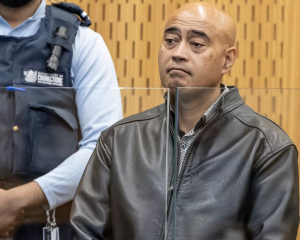
"Unless something catastrophic happens, we are looking at a much reduced road toll," national road policing manager Superintendent Paula Rose said, as New Zealanders started hitting the highways for their summer break.
But Supt Rose warned there was still no occasion for complacency, as this month's toll was running close behind that of last December.
A road toll of 349 between January 1 and yesterday was 60 below the corresponding time last year, when transport safety officials despaired at a blip in an otherwise steady downward trend.
The last time the toll was so low was in 1956, when there were five times fewer vehicles than the current road fleet of about 3.2 million.
It leapt from 329 deaths that year to 384 in 1957, then kept rising almost continuously to a peak of 843 in 1973, when the first drink-driving blitzes were authorised in a climate of high public alarm.
As anti-speeding and seatbelt campaigns were instituted over the next few years, the toll fell dramatically until the 1980s, then surged again through that decade.
The 1990s saw a steady decline until the toll for 2006 fell to 393 deaths - the first year since 1964 in which fewer than 400 people were killed on New Zealand roads.
But last year's toll rebounded to 422 deaths, accompanied by 16,013 injuries, and dashed hope of meeting a Government target of reducing fatalities to no more than 300 by 2010.
That target is now being reviewed, with a long-range goal of no more than 200 annual road deaths by 2040.
Whatever the official targets, Mrs Rose said each death on the country's "killing fields" of tarmac was a tragedy to be avoided.
Drivers owed it not just to themselves and their families, but to everyone else to act safety at all times on the public roads.
"We know if we're going to get close to those targets, we've got to do things differently," she said.
Despite some admirable safety improvement to key roads, and to newer cars, funding was limited and New Zealand had a relatively old vehicle fleet.
"You've got to prioritise but . . . the road is not the sole cause of the crash," she said.
"In an ideal world we would have roads that are built with no bends, without people coming in the opposite lane, without any intersections, and we'd have cars that would do everything for you."
"But in the world we live in, it's the driver who makes the decisions."
Transport Minister Steven Joyce has reinforced the police message, saying summer holidays should be a time for relaxing with family and friends rather than grieving for loved ones after "avoidable tragedies" on the roads.
"While the 2008 road toll so far indicates a positive downward trend, the number of people killed and injured on our roads is still too high," he said in a pre-Christmas message.
"Drivers who drink, speed or take other risks are not just taking a gamble with their own lives - but with those of everyone else on the road."
New Zealand's road fatality rate in 2006 of 9.4 deaths for every 100,000 people ranked 12th highest in a list of 29 countries, above that of Australia (7.7), Britain (5.4), France (7.7) and the Netherlands (lowest at 4.5) but well below that of the United States (14.2) and Greece (highest at 14.9).
The Ministry of Transport estimated the social cost of road crashes last year at $4.5 billion, up from $4.3 billion, including an official price put on each life lost of $3,374,100 - a figure considered by some economists to be too low.
Road deaths
Traffic fatalities through the decades
1908: (first known death - car in Christchurch swerves to avoid horse, hits tram)
1939: 246
1945: 128
1956: 329
1957: 384
1973: 843
1979: 554
1987: 795
1999: 509
2006: 393
2007: 422
(Sources: Ministry of Transport and NZ Transport Agency)











